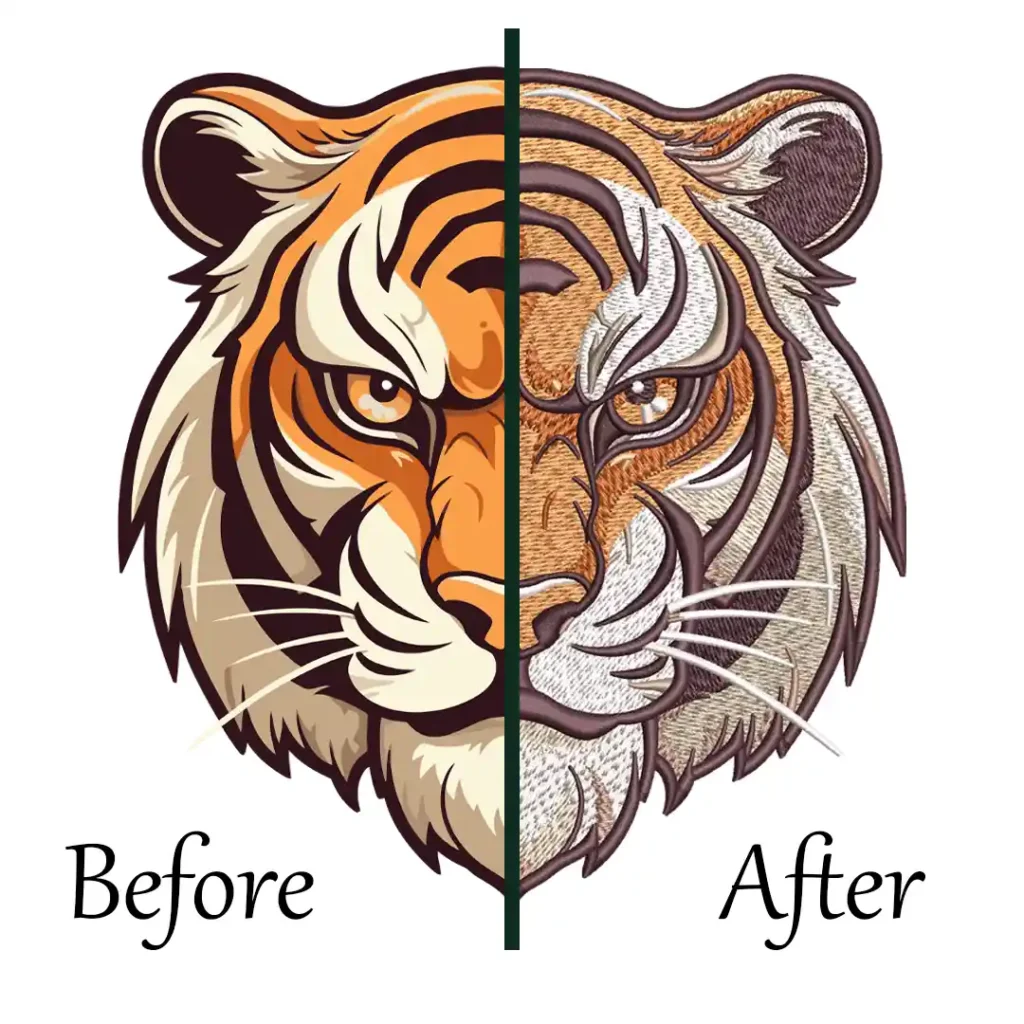What is a vector file? It’s the secret behind professional, high-quality designs. These files are used to create sharp images that look perfect at any size, whether it’s a tiny logo or a huge billboard. Designers love vector files because they make editing and resizing so simple without losing quality. They’re great for logos, illustrations, and anything that needs to look crisp and clear.

If you’ve ever wondered how designers achieve such clean, sharp results, vector files play a big role. Let’s dive into everything you need to know about them!
What is a Vector File? Everything You Need to Know
What is a Vector File?
This is a type of image file that relies on mathematical equations to define shapes, lines, and curves. This unique structure allows them to be resized infinitely without losing their clarity or quality. Unlike raster files, which are made up of pixels and can appear blurry or pixelated when enlarged, vector graphics retain their sharpness and detail, no matter the size.
Embroidery Digitizing & Vector Art Services
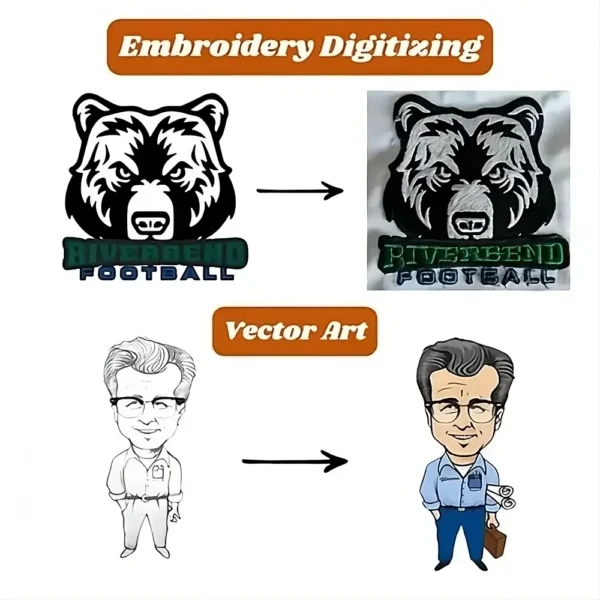
Looking for embroidery digitizing and vector art services that are affordable and reliable? We offer fast turnaround time, guaranteed quality, and the option to preview your design before payment, we make sure you get exactly what you need. Your satisfaction is our top priority, and we’re dedicated to delivering the best results. Don’t wait—try ZDigitizing today and see the difference in quality and service!
Embroidery Digitizing & Vector Art Services
Looking for embroidery digitizing and vector art services that are affordable and reliable? We offer fast turnaround time, guaranteed quality, and the option to preview your design before payment, we make sure you get exactly what you need. Your satisfaction is our top priority, and we’re dedicated to delivering the best results. Don’t wait—try ZDigitizing today and see the difference in quality and service!
Difference Between Vector and Raster Graphics
Characteristic | Raster Graphics | Vector Graphics |
Composition | Made up of pixels | Made up of mathematical equations defining shapes |
Scalability | Limited scalability; loses quality when enlarged | Infinitely scalable without loss of quality |
File Size | Generally larger due to pixel information | Typically smaller due to mathematical representation |
Editing Capability | Limited editing options; difficult to manipulate pixels | Extensive editing capabilities; easy to modify shapes |
Best Use Cases | Ideal for photographs and detailed images | Best for logos, illustrations, and simple graphics |
Color Handling | Supports complex color combinations and gradients | More challenging to create complex color blends |
Software Compatibility | Compatible with programs like Photoshop and GIMP | Requires specialized software like Illustrator or Inkscape |
File Formats | Common formats include JPEG, PNG, and TIFF | Common formats include AI, EPS, SVG, and PDF |
Printing Quality | May have limitations in printing quality | High-quality printing with no limitations |
Conversion Ease | Easier to convert raster to vector | More difficult to convert vector to raster |
What Are Common Vector File Formats?
Vector files come in various formats, each serving unique purposes in graphic design and other applications. If you’re wondering what format is a vector file, it includes options like:
- .AI (Adobe Illustrator)
- .EPS (Encapsulated PostScript)
- .PDF (Portable Document Format)
- .SVG (Scalable Vector Graphics)
- .CDR (CorelDRAW)
- .DXF (Drawing Exchange Format)
1. .AI (Adobe Illustrator)
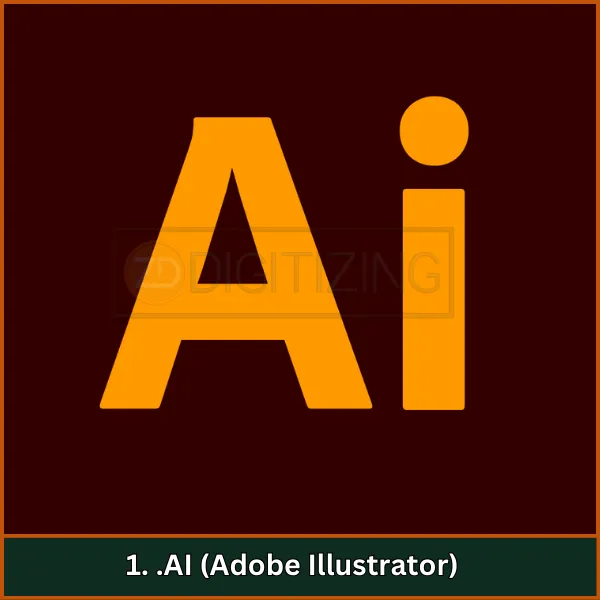
The native file format for Adobe Illustrator, widely used for creating and editing vector graphics. It supports layers, transparency, and various color modes. Files saved in .AI format retain all vector information, making it ideal for ongoing edits and complex designs. This format is best for users who work primarily within Adobe Illustrator.
2. .EPS (Encapsulated PostScript)
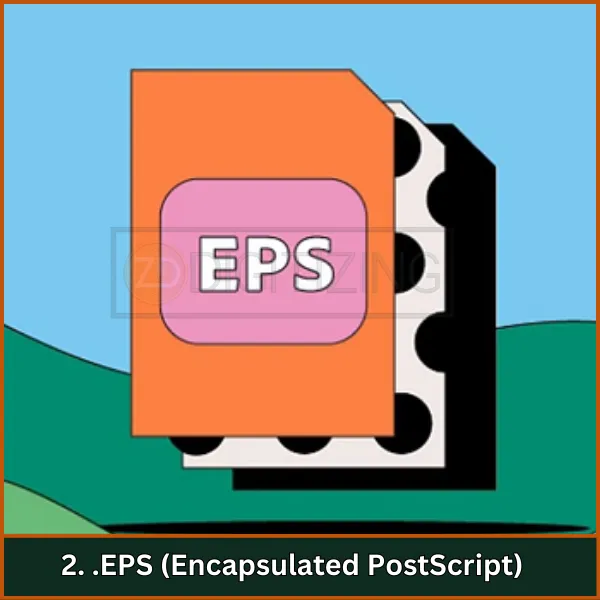
A versatile vector file format that can contain both vector and raster graphics. EPS files are commonly used for transferring images between different graphic design applications. They are widely supported by various software, making them a popular choice for professional printing and publishing.
3. .PDF (Portable Document Format)

Although primarily known as a document format, PDFs can also contain vector graphics. They are widely used for sharing and printing documents while maintaining the layout and design across different platforms. PDF files can be opened in many applications, making them a convenient option for distributing vector artwork.
4. .SVG (Scalable Vector Graphics)
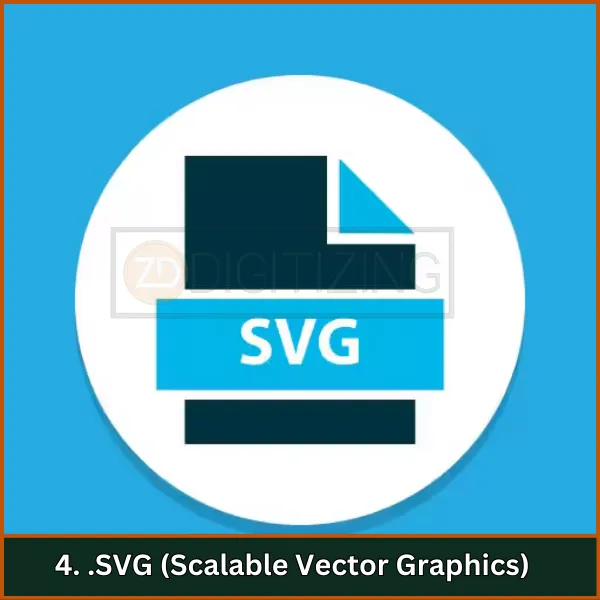
An XML-based vector image format that is particularly suited for web use. SVG files are scalable without loss of quality and can be manipulated with CSS and JavaScript, making them ideal for responsive web design. They are widely supported by modern web browsers.
5. .CDR (CorelDRAW)
The native file format for CorelDRAW, a popular vector graphic design software. CDR files support layers, effects, and multiple color modes, similar to .AI files but specific to CorelDRAW users. This format is commonly used in professional graphic design environments that utilize Corel products.
6. .DXF (Drawing Exchange Format)
A CAD data file format developed by Autodesk for enabling data interoperability between AutoCAD and other software applications. DXF files can contain both 2D and 3D drawings and are often used in engineering and architectural designs, allowing vector graphics to be shared across different CAD programs.
Advantages of Vector Files
Vector files offer numerous benefits due to their unique structure. If you’re wondering what is a vector file, it’s a format that ensures high-quality scalability, making it ideal for professional and versatile design applications.
- Infinite Resolution: Vector files retain clarity at any size, allowing them to scale without quality loss, perfect for diverse applications.
- Scalability: Easily resized to fit any dimensions, ideal for logos and branding materials used in various sizes.
- Lightweight (Small File Size): Smaller file sizes compared to raster images lead to faster load times and improved website performance.
- Easy Manipulation: Shapes, colors, and sizes can be edited effortlessly, streamlining the design process.
- High-Quality Output: Provides sharp, professional-quality graphics suitable for print and digital use.
- Reusability: Graphics can be reused in multiple projects without degrading quality, ensuring consistency and saving time.
- Versatility: Suitable for creating a wide range of designs, from logos to animations, across both print and digital media.
- Animation Capability: Maintains sharpness and quality even when animated, enhancing motion graphics and web animations.
- Code Editability: Developers can manipulate vector files like SVG using code for responsive and interactive web designs.
- Interactivity: Supports interactive elements, increasing engagement in websites and applications.
Disadvantages of Vector Files
Vector files are highly versatile but have certain limitations. If you’re wondering what is a vector file logo, it’s perfect for clean, scalable designs but may face challenges in specific use cases.
- Limited Detail for Complex Images: Best suited for simple shapes but struggles with intricate textures and photorealistic details.
- Difficulty Editing Photorealistic Images: Adjusting textures and shadows in vector files can be challenging compared to raster graphics.
- Performance Issues with Complex Designs: Highly detailed vector graphics can slow down processing and require significant computational power.
- Limited Color Options: Restricted in blending and gradients, making it less ideal for visually rich designs.
- File Size Concerns: Extremely detailed vector files can grow large and may need optimization for efficient use.
- Incompatibility with Effects: Certain raster-based effects and filters are not easily applied to vector graphics.
- Challenges in Printing: Printing high-resolution vector designs may require rasterization, potentially leading to loss of detail.
- Skill and Time Requirements: Creating intricate vector graphics demands expertise and can be time-intensive.
- Unsuitable for Certain Art Styles: Styles with rich textures and brushwork may not translate well into vector formats.
- Software Compatibility Issues: Not all platforms or software support vector files, creating potential compatibility challenges.
What Software Do You Need to Edit Vector Files?
To edit vector files effectively, you need software that supports their unique format. If you’re curious what extension is a vector file, common formats include .AI, .SVG, and .EPS, all of which require specific tools for editing.
- Adobe Illustrator
- CorelDRAW
- Inkscape
- Affinity Designer
- Gravit Designer
1. Adobe Illustrator
Adobe Illustrator is the gold standard in vector graphic design, widely used by professionals for creating intricate illustrations, logos, and complex graphics. It provides a comprehensive suite of tools that cater to both beginners and advanced users.
Features: Offers advanced drawing tools, extensive typography options, multiple artboards, and seamless integration with Adobe Creative Cloud, making it a versatile choice for creative projects.
2. CorelDRAW
CorelDRAW is a robust graphic design software known for its intuitive interface and powerful features. It excels in vector illustration and layout, making it a favorite for print design and web graphics.
Features: Includes intuitive drawing tools, advanced color management, support for various file formats, and specialized features for print and signage design.
3. Inkscape
Inkscape is a free, open-source vector graphics editor that rivals many commercial tools. It’s ideal for beginners or experienced designers seeking a budget-friendly solution.
Features: Features node editing, path manipulation, compatibility with multiple file formats (like SVG), and a strong user community offering tutorials and plugins for enhanced functionality.
4. Affinity Designer
Affinity Designer is a professional-grade software known for its speed and efficiency. It’s a popular choice among designers looking for a one-time purchase alternative to subscription-based tools like Adobe Illustrator.
Features: Includes a dual environment for vector and raster editing, real-time performance, advanced grid systems, and flexible export options for various file formats.
5. Gravit Designer
Gravit Designer is a versatile and accessible vector design tool available online and as a desktop app. It’s perfect for users seeking a lightweight yet powerful solution for creating vector graphics.
Features: Offers an intuitive interface, cross-platform compatibility, cloud storage for easy project access, and a variety of pre-made design templates and resources to jumpstart creative projects.
How to Open and Edit Vector Files
If you’re unsure what is a vector file, it’s a format that allows easy resizing and editing without losing quality. Follow these steps to open and edit vector files efficiently.
1. Choose the Right Software
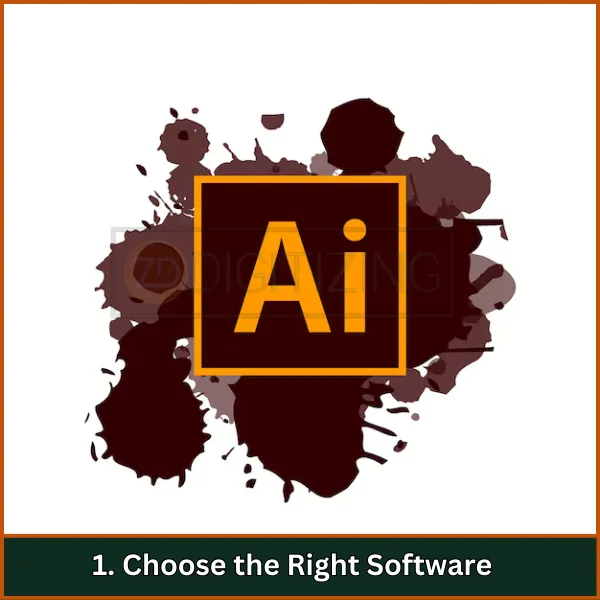
Select a program like Adobe Illustrator, CorelDRAW, or Inkscape based on your needs and expertise.
2. Open the Vector File

Launch the chosen software.
Use the “Open” option to locate and access your file (e.g., .AI, .SVG).
3. Edit the Vector Graphic
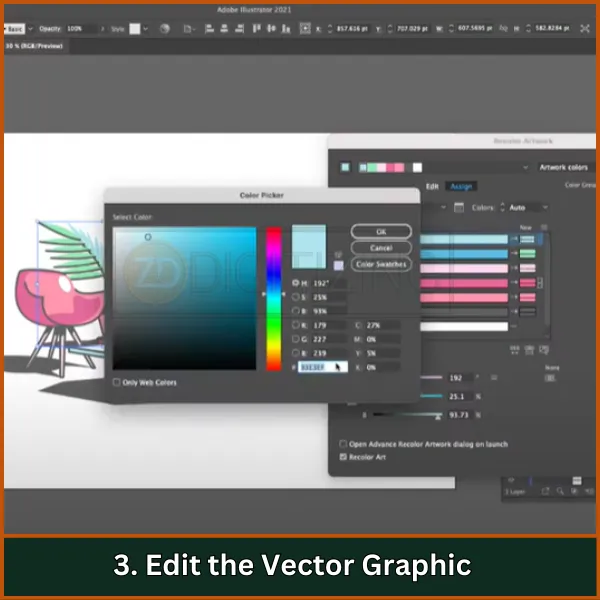
Modify shapes, colors, paths, or text using the software’s tools.
Use layers to organize and adjust different elements of your design.
4. Save Your Work

Save your project in the original format (e.g., .AI) for future edits.
Export as .SVG, .PDF, or other formats for sharing.
5. Export Options
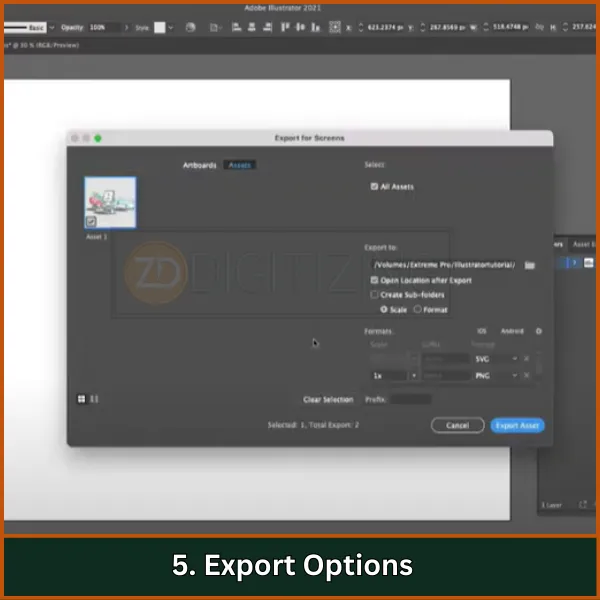
Convert your design to formats like PNG or JPEG for compatibility with web or print requirements.
By following these steps, you can work with vector files seamlessly and adapt them to your creative needs.
What Are the Applications of Vector Files?
Vector files are versatile and widely used across industries for their scalability and precision. If you’re curious what is a vector image file, it’s a format that ensures exceptional quality in numerous applications.
- Vector graphics are perfect for logo design, ensuring sharp and scalable logos for business cards, billboards, and everything in between.
- They are extensively used in branding and marketing materials, such as brochures and flyers, for consistent quality across sizes.
- Essential in web and app development, vector files adapt seamlessly to various screen sizes and resolutions.
- Commonly utilized for illustrations and infographics, maintaining detail and clarity regardless of scaling.
- Widely employed in animation, allowing for smooth visuals and clean transitions.
- Used in print media, such as magazines and posters, for high-quality, crisp outputs.
- In the fashion and textile industry, vector graphics ensure precise designs for clothing patterns and fabric prints.
- Integral to CAD applications, they represent complex engineering and architectural designs with precision.
- Popular in signage, as vector graphics maintain legibility and quality when resized for different formats.
- Frequently applied in T-shirt design, enabling vibrant and detailed artwork without losing sharpness.
Embroidery Digitizing & Vector Art Services

Looking for embroidery digitizing and vector art services that are affordable and reliable? We offer fast turnaround time, guaranteed quality, and the option to preview your design before payment, we make sure you get exactly what you need. Your satisfaction is our top priority, and we’re dedicated to delivering the best results. Don’t wait—try ZDigitizing today and see the difference in quality and service!
Embroidery Digitizing & Vector Art Services
Looking for embroidery digitizing and vector art services that are affordable and reliable? We offer fast turnaround time, guaranteed quality, and the option to preview your design before payment, we make sure you get exactly what you need. Your satisfaction is our top priority, and we’re dedicated to delivering the best results. Don’t wait—try ZDigitizing today and see the difference in quality and service!
Conclusion
Understanding what is a vector file is essential for creating designs that are sharp, scalable, and professional. Whether you’re working on logos, animations, or print materials, vector files ensure your designs always look their best.
At ZDigitizing, we specialize in delivering high-quality vector art services at the most affordable rates. Our services come with a super-fast turnaround time and a quality guarantee to meet all your design needs. Plus, we offer a preview option so you can see the results before finalizing.
If you’re a first-time customer, take advantage of our 50% discount on your first order! Don’t miss out—get started with us today!
FAQs
Yes, vector files are perfect for printing because they retain sharpness and clarity at any size. They are commonly used for logos, banners, and high-quality marketing materials.
You can use software like Adobe Illustrator, CorelDRAW, Inkscape, Affinity Designer, or Gravit Designer to create or edit vector files. These tools offer a variety of features to suit different design needs.
Vector files are scalable without losing quality, easy to edit, and lightweight compared to raster files. They are ideal for creating professional designs like logos, illustrations, and print materials.
Yes, raster images can be converted to vector files using tools like Adobe Illustrator or Inkscape. This process ensures the design is scalable and maintains its quality.
Vector files are used for creating logos, illustrations, animations, web graphics, and print materials like brochures and banners, thanks to their flexibility and quality retention.

